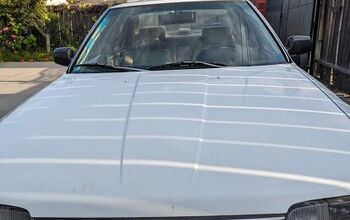QOTD: Would Anyone in America Miss Professional Motorsports?

On Sunday, I watched a fantastic car race. Unfortunately, based on the shots of the crowd, I might have been among very few who did.
The INDYCAR (are we still capitalizing it?) Pocono 500 had everything a race fan could want: upwards of thirty lead changes, some spectacularly competitive and aggressive racing (including one restart where the drivers went seven wide), and a tight points race where the season championship would be greatly affected by the outcome. Unfortunately, there was also a spectacular crash that has one racer battling for his life.
Meanwhile, the race had far fewer fans in attendance than the 30,000 that Indy officials said that they would need in order for Pocono to be on the race schedule in 2016.
On an August Sunday, where the TV sports calendar had no football or anything more compelling than Tiger Woods finishing tenth at a non-major tournament, the second-to-last Indy race of the season was relegated to NBC Sports Network — a network that I’m frankly surprised my rather basic cable package includes. I don’t know what the overnight viewership number was, but I’m going to guess it was comparable to a regular season baseball game; a Tuesday afternoon baseball game, that is.
The other roundy-round racing series in America isn’t faring too well, either. It’s hard to remember that NASCAR was once considered the fourth major sport in this country for a brief time at the beginning of the century. They, too, now struggle to fill the stands at most races, especially anything that takes place outside of the sport’s core demographic area of the southeastern U.S. They can’t get a decent TV deal anymore. Perhaps the most damning evidence of NASCAR’s struggles can be seen in the continued presence of Danica Sue Patrick on the track, despite a whopping six top ten finishes in 105 starts. She was without a sponsor for roughly six minutes when GoDaddy dropped her this season. Despite her struggles on track, she’s still as powerful a marketing force as anybody else NASCAR has in 2015. And with the impending retirement of Jeff Gordon and the rapid graying of most of its stars, NASCAR is in a world of hurt unless they can find a new generation of stars quickly (and Kyle Larson and Austin Dillon ain’t cutting it so far).
You might like sports car racing (although our site statistics beg to differ), but most Americans have no idea what that even means. No, for most Americans, car racing means that thing that the racists and hillbillies like to watch. Despite our nation’s recent tendency to become less exceptional and as much like Spain as possible, we just can’t seem to embrace motorsport like the rest of the world does.
So, my question is: if INDYCAR and NASCAR folded tomorrow, would anyone notice and/or care? Outside of Charlotte and Indianapolis, I think not. At best, it’s a regional sport with limited demographic appeal and virtually none of the “diversity” that everything appears to be required to have as of late. Neither sanctioning body has figured out how to appeal to that craved 25-34 group, and I fear that will ultimately be the death of Auto Racing as a spectator sport in our great nation.
What say you, B&B?
[Photo by: Chris Owens/INDYCAR]

More by Mark "Bark M." Baruth
Latest Car Reviews
Read moreLatest Product Reviews
Read moreRecent Comments
- Lou_BC On a different note, I read that 30% of the world's energy is now generated by "renewable" sources.
- Kjhkjlhkjhkljh kljhjkhjklhkjh not surprised their grid is as terrible as ours ...
- Lou_BC EV's are a convenient foil. Cadillac has been searching for its place. Are are they luxury performance? In your face audacious? Do they offer prestige? What sets them apart from the rest of "the look at me I'm special" vehicle market? I can buy a Denali SUV or pickup with similar luxury.
- Cprescott No big loss. It was always third rate when there was competition. At best its only good point was its price point.
- ToolGuy Journalists saving the world again. LOL.


































Comments
Join the conversation
Sailplane racing is much different. While the rulemaking bodies intervened, they generally were content with tinkering with rules, which are admittedly somewhat baroque, but no more than of, say, baseball or soccer. The big difference is that the nature continues to be unpredictable and the pilot is obviously a major factor. Another thing, although airplanes in general are not cheap, you can go far on reasonable means. I know a guy, living in Kansas, who's a world class pilot, and keeps a day job as a teacher. Of course, he croudfunds, but he does not have to get anywhere near the sponsorship a Le Mans team needs (in any class). Oh, and finally, someone made a point about familiarity, and about not picking sports late in life. Although everyone drives, very few people fly. But on the upside, many start flying late in life. Gliders, in particular, attract empty-nesters, because they are not useful as basic transportation.
Nope wouldn't really miss it. But then again i get bored watching any sport.